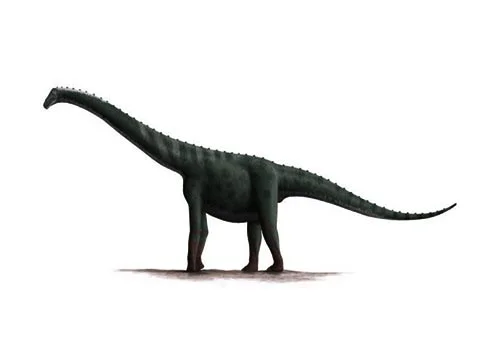Lapparentosaurus (Lapparent’s lizard)

Lap-pa-ren-toe-sore-us
Jose F. Bonaparte - 1986
Herbivore
Estimated 15 meters long
Sauropod
L. madagascariensis (type)
Madagascar - Isalo III Formation
Late Cretaceous, 83-66 million years ago
Lapparentosaurus Facts
Lapparentosaurus is a genus of sauropod dinosaur that lived in what is now Argentina during the Late Cretaceous period, about 83-66 million years ago. The name Lapparentosaurus honors Albert-Félix de Lapparent, a French paleontologist who made important contributions to the study of dinosaurs.
Lapparentosaurus was a relatively small sauropod, reaching lengths of about 15 meters (49 feet) and weighing around 5-6 metric tons. Its most distinctive feature was a series of wide, flat plates along its back, which may have served as a form of armor or as a display structure. Like other sauropods, Lapparentosaurus had a long neck and tail, and a relatively small head with a toothless beak for cropping vegetation.
Lapparentosaurus is known from a single, relatively complete specimen discovered in the Allen Formation of Argentina in the 1930s. The specimen includes most of the skeleton, including the skull, and is one of the best-preserved sauropod specimens from South America. It is thought to represent a mature individual, based on the degree of fusion in its bones.
Lapparentosaurus was part of a diverse assemblage of dinosaurs that lived in what is now Argentina during the Late Cretaceous, including other sauropods like Patagosaurus and Limaysaurus, as well as theropod dinosaurs like Carnotaurus and Abelisaurus. Its discovery has helped shed light on the evolutionary history of sauropods in South America, and has contributed to our understanding of the complex ecosystems that existed during the Late Cretaceous.



